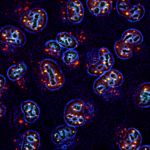Link to Pubmed [PMID] – 24736102
J Expo Sci Environ Epidemiol 2015 May;25(3):256-63
Genomic analysis of hepatocellular carcinoma (HCC) has been shown to provide clues about local risk factors. In the last decades, the mortality from malignant liver tumors increased sharply in Romania, where both hepatitis viruses and environmental pollutants are known to be highly prevalent. To date, HCC from this country has not been subject to molecular characterization. We analyzed a series of 48 consecutive HCC cases. Point mutations were searched in 9 nuclear genes and the mitochondrial D-loop. Oxidative stress response was monitored through measurement of gene expression (NRF2, KEAP1, SRXN1, and CES1) by qRT-PCR. An atypical mutation spectrum was observed, as more than 40% of DNA changes were oxidative stress-associated T>C or T>G lesions (T>S). These mutations affected primarily genes encoding for β-catenin and NRF2 (P<0.0001). Besides, tumors from patients born in Greater Bucharest carried TP53 mutations more frequently than others (45 vs 10%, P=0.02). Finally, a R249S mutation of TP53, well-known hallmark of aflatoxin B1 exposure, was found. Our findings indicate, therefore, that distinct mutagenic processes affect Romanian patients with HCC. Further analyses are now warranted in order to identify causal lifestyle or environmental factors.

